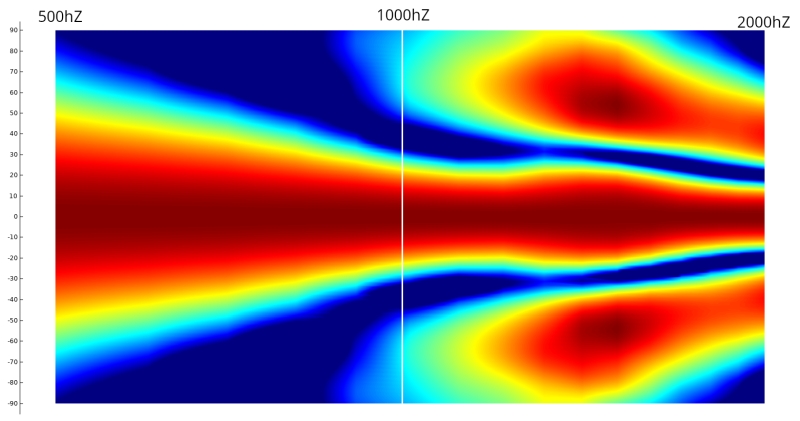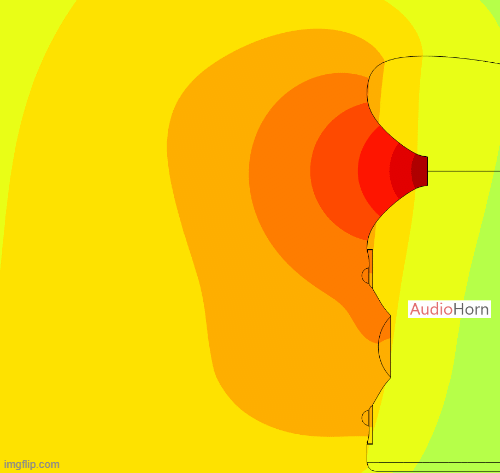The Center-to-Center Conundrum: Why Distance Matters in Speaker Design
Introduction
When it comes to crafting the perfect speaker, meticulous attention is paid to every detail, from the materials used to the precise arrangement of the drivers.
One crucial factor, often overlooked, is the center-to-center distance between the mid-woofers and the tweeter section.
Placing them too close together can create a phenomenon known as vertical lobing, negatively impacting sound quality.
Understanding Vertical Lobing
Vertical lobing reduces overall coherence. When two woofers interact and create off-axis cancellations, the soundstage can lose its unity, especially around the crossover region. This may give the impression that the low and high frequencies are not blending seamlessly, resulting in a less stable and less powerful presentation.
At typical listening distances, where direct and reflected sound are balanced, these vertical cancellations become more apparent in the perceived image. They create regions of weaker output above and below the acoustic axis, contributing to a soundscape that can feel fragmented if the driver spacing is not well controlled.

While an ideal center-to-center spacing close to 66 percent of the crossover wavelength minimizes these effects, perfect compliance isn’t always required. Our hearing is also less sensitive to vertical irregularities because the ears sit horizontally and the brain naturally compensates for floor reflections.
Is it perceptible?
While the ideal center-to-center distance is roughly 66% of the crossover wavelength, achieving perfection is not always necessary for several reasons:
Our ears are more sensitive to horizontal reflections than vertical ones due to their orientation and the brain’s adaptation to floor reflections.
The perception of a “point source” comes from the coherent summation of sound waves between the drivers. This behavior depends strongly on the center-to-center spacing relative to the wavelength at the crossover frequency, but not only.
Listening distance also plays a major role. A system heard at 1 meter behaves differently than at 6 or 30 meters. At sufficient distances, even a large line array is perceived as a point source.
Any well-designed loudspeaker with a sufficiently low crossover frequency, especially horn-loaded systems, will exhibit point-source behavior at a reasonable distance, even large systems. In practice, when listening from more than 50–70 cm, achieving the sensation of a point source does not require special measures compared to a conventional two-way system where the drivers are crossed low enough and positioned close enough to each other.
The issue of lobing is not determined by center-to-center distance alone. This spacing must be considered together with the crossover frequency (therefore the wavelength) and the listening distance; taken in isolation, center-to-center spacing is meaningless.
The Diffraction Impact
When using a low crossover with closely spaced components, lobing issues are largely mitigated. However, diffraction can still be present, especially in small loudspeakers, degrading the vertical polar response and, in extreme cases, affecting the horizontal response when elements are very close together.

The physical presence of the woofer inherently causes diffraction and affects directivity.
Many people mistakenly attribute vertical polar degradation to lobing, when in fact it is the high-frequency wavefront being diffracted by the physical presence of the woofer positioned below that causes most of these artifacts, simply because it is seen as a physical obstacle by the high-frequency wavefront arriving on it.
This effect is more pronounced in smaller loudspeakers. In smaller loudspeakers, the drivers are closer together, so the wavelengths produced by the high-frequency section and affected by this diffraction are shorter. Unfortunately, these shorter wavelengths are more prone to beaming (leaving the surface) and creating these artifacts.
This aspect also applies to coaxial or MEH. It can even be worse, as the obstacle – for example, the coaxial surround – is completely symmetrical around the center of emission. This concentrates the problem and makes it even more pronounced if the surround and/or any other possible obstacles are not smoothed. These concentrated artifacts further affect a directivity that is already less uniform and clean than that of a well-implemented constant directivity horn.
The polar responses of these systems can be seen in the MEH and coax sections of our MTM, 2.5 or 3 voices article.
This behavior is detailed in our article dedicated to diffraction, particularly in the “Diffraction on Woofer” section.
MTM Configuration: A Balancing Act
The MTM (Mid-Tweeter-Mid) configuration, where the tweeter sits between two mid-woofers, also faces similar challenges.
With a single woofer, the vertical radiation pattern remains consistent if proper implemented. When a second woofer is added in close proximity, certain frequencies will overlap and partially cancel, most noticeably above and below the acoustic axis. These vertical cancellations form lobes – areas of reduced output – which can make the system sound less cohesive, as if the woofers and tweeter were not fully integrating.
To address these effects, one would need to cross the woofers extremely low or place them almost touching, which is impossible in an MTM arrangement. The elegant solution is a 2.5-way filtering in an MTM configuration. We cover this in the dedicated article: MTM, 2.5 or 3 voices ?.
Horizontal Lobing
Placing woofers horizontally introduces also horizontal lobing.
This create similar cancellation effects, which in some cases can be used to shape the directivity to match a horn. However, lobes are very sensitive, so the woofers must be extremely close together and not too large. Simulations should always be used.
We also address this point in our MTM, 2.5 or 3 voices article.
Perfect Vertical Alignment
Vertical alignment between the high-frequency section (tweeter) and the mid-woofer section, on the same vertical line, is crucial.
Misalignment can cause phase cancellation at different angles on the left and right sides of the speaker, leading to reduced power response and create sound inconsistencies.
The Takeaway and How to Fix It?
Careful consideration of both center-to-center distance and vertical alignment is essential for achieving optimal sound quality. By maintaining a suitable separation and precise alignment, speaker designers can minimize lobing and ensure a smooth, coherent listening experience.
Remember, minimizing lobing involves a delicate balance. While lobing caused by excessive spacing is generally easier to address compared to other acoustic challenges, achieving optimal sound quality requires careful consideration of both center-to-center distance and other design factors. Placing drivers closer together is the solution, but a lower crossover frequency might also be needed.
Here are some techniques speaker designers use to address lobing:
-
Maintaining a suitable center-to-center distance: This distance is roughly 66% of the crossover wavelength for optimal performance, but slight deviations can be acceptable depending on the overall design.
-
Lower crossover frequencies (a design consideration): A lower crossover frequency help to mitigate lobing in some designs, it affects the overall response (we have to take care about distortion and directivity match at crossover) and is a factor weighed during the design process.
Time alignment is another important tool in a speaker designer’s arsenal. By electronically adjusting the timing of signals sent to each driver, they can achieve better phase coherence and reduce lobing effects. However, it’s a separate consideration from the physical placement of drivers.
By understanding these techniques and the trade-offs involved, speaker designers can create speakers that deliver a rich and well-balanced listening experience.